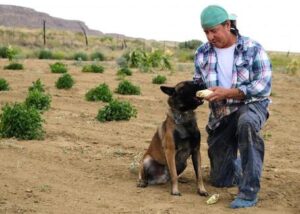
by Sarah Phillips @FutureofFoodisNow
This Hopi dry farmer is trying to safeguard seeds from threats of climate change, commercialization. Since last September, Michael Kotutwa Johnson, a 253rd generation Hopi dry farmer, now trying to find solutions to combat threats of climate change through research at the University of Arizona, as an assistance specialist within the School of Natural Resources and the Environment.
Hopis mainly live in 12 ancient villages atop First, Second and Third Mesa, where the 1.5 million acre reservation typically receives between about 6 and 10 inches of average precipitation, both rain and snowfall annually.
In spite of such little precipitation, these resilient villages have endured the test of harsh weather and time. Located atop Third Mesa, Old Oraibi is considered to be the oldest continuously inhabited village in the U.S. since about 1150.
Hopis have lived and farmed this way on these same lands for generations amid these incredibly tough conditions. They’re still successful “because we’ve been out here for 3,000 years, there’s a lot of ingenuity that we have,” Johnson elaborated, “and so, we’ve adapted our plants to fit this environment. We don’t manipulate the environment to fit our plants.”
But climate change is harming agriculture. It’s an undeniable challenge that even some of the most resilient Hopi dry farmers are now facing in northern Arizona.
Q: Do you think that Mr. Johnson’s way of growing corn in arid soil is applicable worldwide?
More about dryland farming.
Article by Gabriel Pietrorazio, “This Hopi farmer is trying to safeguard seeds from threats of climate change, commercialization” fronterasdesk.org, March 20, 2024
Thanks to Dr. Michael Kotutwa Johnson @dr._hopi_farmer for the article






